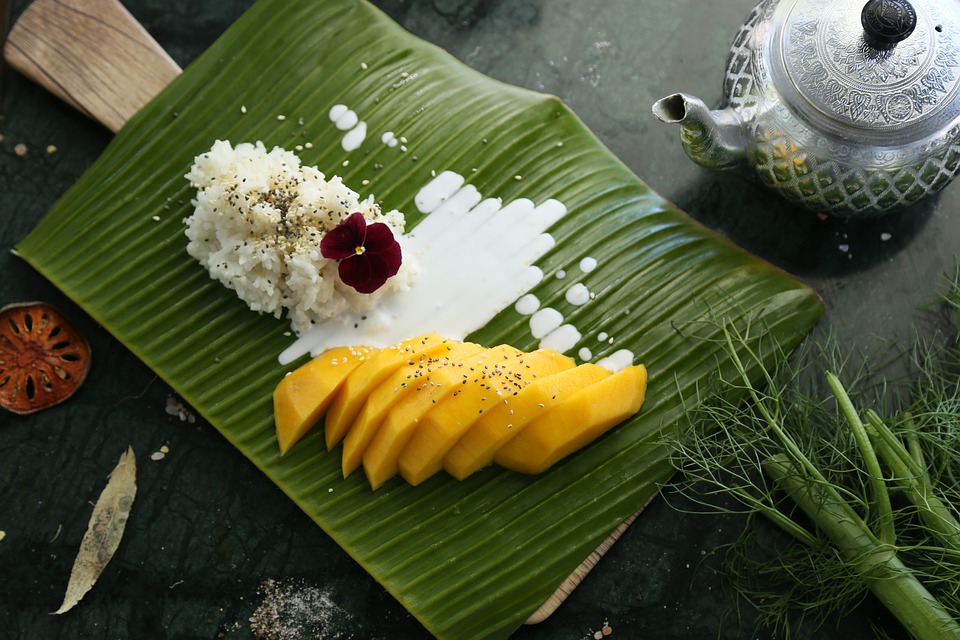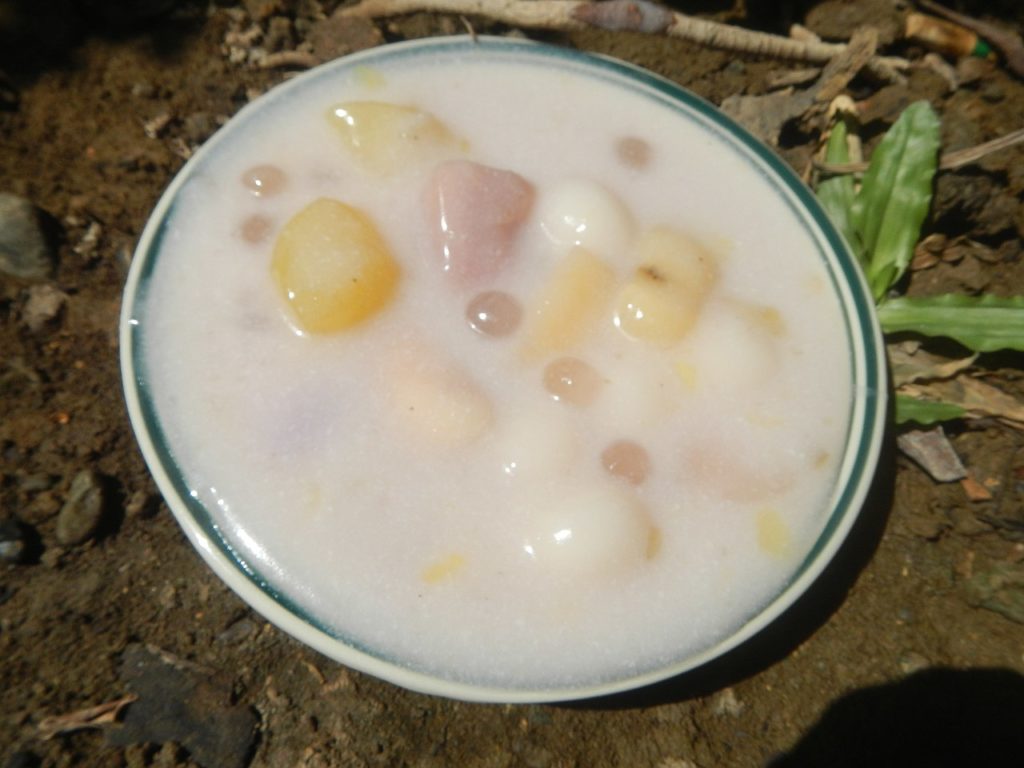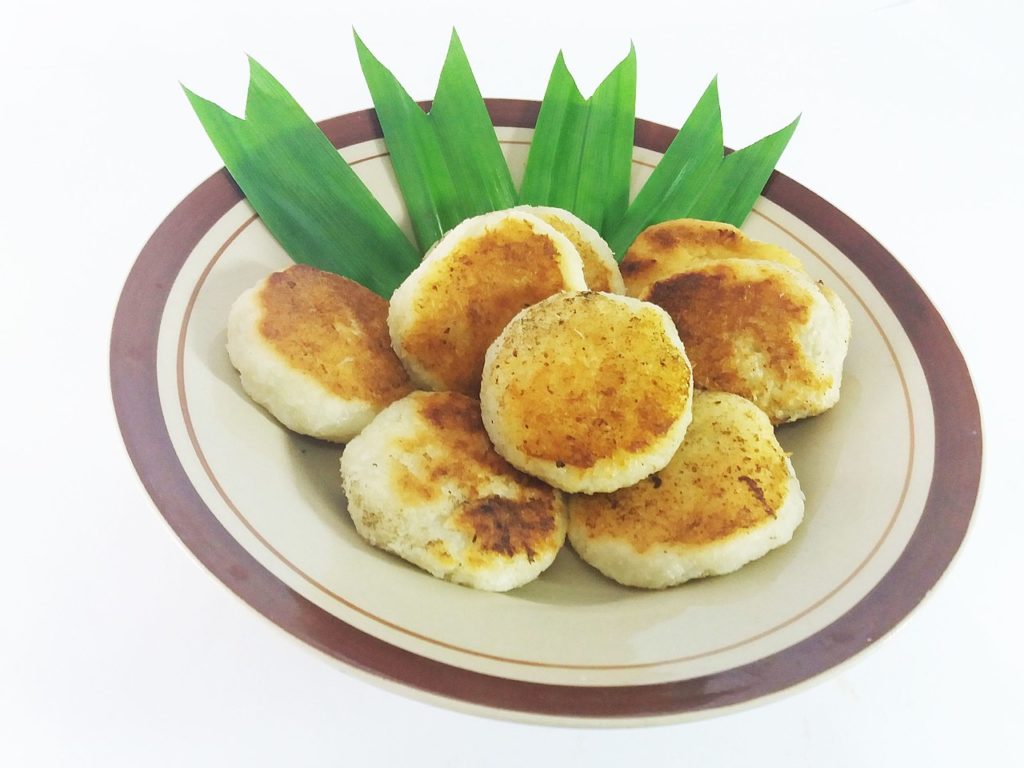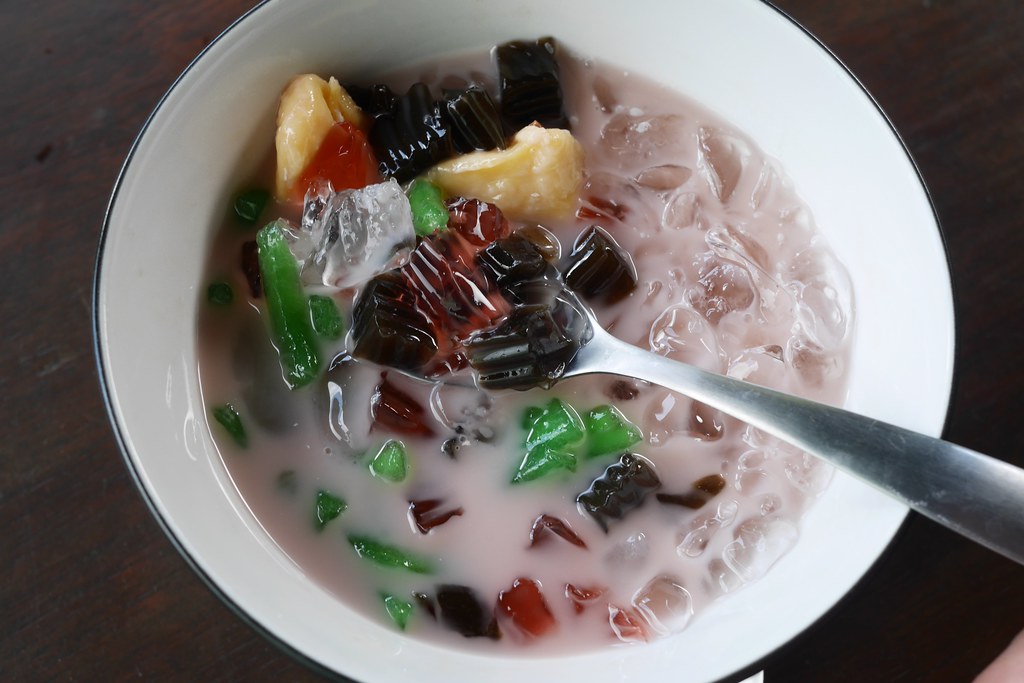Banana fritters
Popularly sold as a street snack, this dessert involves dipping bananas in a rice flour batter and deep-frying them until golden brown.
 The batter for the Thai kluai thot is usually sweeter, while the pisang goreng in Malaysia and Indonesia is usually more savoury in order to contrast with the banana.
The batter for the Thai kluai thot is usually sweeter, while the pisang goreng in Malaysia and Indonesia is usually more savoury in order to contrast with the banana.
Vendors also often sell slices of sweet potato and yam as well as cempedak, which have been given the same deep-fried treatment.
Mango sticky rice
This is probably Thailand’s most well-known dessert and is widely available across the country, although it is also eaten in neighbouring Laos, Cambodia and Vietnam.
 Khaoniao mamuang consists of sweet, golden mango paired with glutinous rice steamed with coconut cream and sugar, and topped with a drizzle of rich coconut cream.
Khaoniao mamuang consists of sweet, golden mango paired with glutinous rice steamed with coconut cream and sugar, and topped with a drizzle of rich coconut cream.
If you like durians, there’s a variation that uses the custardy yellow flesh of the “King of Fruits” in place of fresh mango slices.
Bilo-bilo
Said to have originated from Luzon in the Philippines, bilo-bilo is a dessert soup with a coconut milk base.
The dessert gets its name from the little rice flour balls that are added to the soup, along with local fruits like jackfruit strips and banana slices.
 Sometimes boiled root vegetables like yam and sweet potatoes are included in the creamy mixture as well.
Sometimes boiled root vegetables like yam and sweet potatoes are included in the creamy mixture as well.
Bilo-bilo is typically served as a lunchtime dessert and is delicious whether it’s served warm or cold.
In Malaysia, there’s a similar dessert called bubur cha-cha. Like bilo-bilo, bubur cha-cha has a coconut milk base and, in addition to banana slices, cubes of yam and sweet potato are added to the creamy mix.
Wingko
Wingko is a sweet pancake originating from Java in Indonesia.
The main ingredients are grated coconut, sugar and rice flour, which are combined with fresh coconut milk. The mixture is then shaped into discs and pan-fried until crispy.
 Wingko can be found in many roadside stalls but they’re also mass produced in many factories across the island.
Wingko can be found in many roadside stalls but they’re also mass produced in many factories across the island.
Aside from being a popular snack, these pancakes are often given as gifts to people returning to Java after having been away.
Es campur
In Indonesia, this shaved ice dessert is known as es campur.
It consists of jackfruit slices, avocado chunks, coconut flakes, condensed milk and syrup mixed with crushed or shaved ice.
This refreshing dessert is then topped with small cubes of grass jelly, tapioca pearls and basil seeds. Widely available across the country, each province has its own variation.
 In Malaysia and Singapore, there is a similar dessert called ais kacang, also known as ABC (air batu campur or “mixed ice”).
In Malaysia and Singapore, there is a similar dessert called ais kacang, also known as ABC (air batu campur or “mixed ice”).
Shaved ice is heaped on top of an assortment of ingredients, including kidney beans, sweetcorn, grass jelly, peanuts and attap chee, or the young fruit of the nipa palm.
The shaved ice is then doused with rose cordial, palm sugar syrup and a generous serving of evaporated milk.
The Filipino variation is called halo-halo – red beans, coconut strips, coconut jelly, jackfruit slices and cubed sweet potatoes topped with shaved iced and drizzled with evaporated milk and a scoop of ube (purple yam) ice cream.
According to airasia.com













